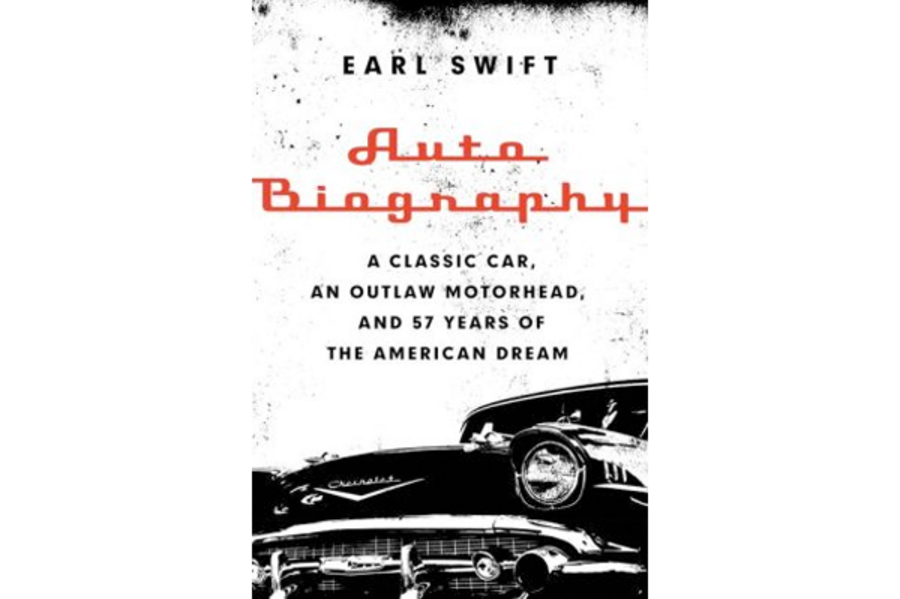Auto Biography
Loading...
Earl Swift’s book is so good it might spur the reader to generate car riffs, like “this book is a hot rod” or “this book drives like a dream.” Hooked on the first page, you cruise through it and are sad when it ends. Satisfied, too.
A true tall tale that doubles as a complicated fable, Auto Biography is the wild and woolly saga of a 1957 Chevrolet station wagon, its 13 owners, and Tommy Arney, the appetite-forward, contradictorily honorable character who restores the four-door chariot to a glory even greater than its original.
Not for gearheads only, this is cultural history so streamlined and textured you can’t help fall under its spell. In blending car lore, political insight, social analysis, and sharp personality profiles, “Auto Biography” blurs the lines between the mechanical and the human. You wind up caring as much about the Chevy as about the people who keep it going.
Here, the wagon’s sixth owner-to-be, a 36-year-old divorced mother of two named Mary Elizabeth Byrum Ricketts, contemplates the purchase. She “knew the $1,500 asking price would stretch her,” Swift writes. “She knew that she’d have trouble meeting the inevitable repair and maintenance bills. But Ricketts was not a slave to conventional thinking, careful decision making, or, truth be told, good judgment. She was a hippie chick, a rock-and-roller, an eccentric, a free spirit who dyed her hair maroon and laughed louder than was polite and collected bowling shirts, who wore cat-eye glasses and flamingo earrings decades after they were popular and long before they cycled back around.”
Swift has a fine touch for the human. The same holds true for the mechanical.
Two-thirds through the book, Swift, a former reporter for the Norfolk, Va. Virginian-Pilot who got hooked on Arney’s story in the early 1990s, puts cars in perspective. Like so many other cars of its time, this Chevy featured body-on-frame construction, its frame bolted to its chassis. Today’s unibody cars join body and frame in a welded steel box. They are safer, lighter, more fuel-efficient, and far more durable.
Character? Not an issue. The vintage Chevy beats today’s cars hands down.
How it met its match in Arney, that angry, protean, and relentlessly entrepreneurial product of a broken home who winds up being a good family man, is the backbone of this book.
Arney lords over a sprawling used-car lot/body shop called Moyock Muscle in Moyock, N.C., hard by the Virginia border. He also owns several bars, including the Body Shop, an enterprise as well-known for its strippers as for the fights in which Arney so regularly engages. He got into big trouble with Currituck County, and he’s paying the price. One man’s battle with government is a potent subtheme here.
Arney is indeed a force. On his way to auto scrap heap moguldom, he worked as a bouncer in various Norfolk, Va.-area clubs. He also became known for an unusual way of subduing people:
“In a memorable showdown at an after-hours joint, Arney advised a belligerent bodybuilder that he planned to slap him not only out of lucid thought, but out of the flip-flops he wore,” Swift writes in a chapter in which the promiscuous Arney discovers that – instead of the AIDS verdict that he had feared – he has instead been diagnosed with Hodgkin’s disease. “The man replied that he’d like to see Arney try. He woke up barefooted.”
Then there’s the time Arney beat up a cop with the cop’s own dog. There’s more. This is not a book for the squeamish.
It took Swift several years to tell the story behind “Auto Biography” (splitting the original term into its parts was inspired). It’s superb journalism although it’s not objective; not only did Smith become friends with Arney, he helped restore the wagon and worked to put together a reunion of as many of its former owners as he could corral.
Arney, meanwhile, is in jail, convicted of conspiracy to commit bank fraud in connection with $7.5 million in interest-free loans he secured from the now-defunct Bank of the Commonwealth. Such are the consequences of trying to live the American Dream, Swift suggests.
The car is in the hands of its 14th owner. The man is having a hard time finishing the restoration work Arney’s shop did so assiduously and expensively ($40,000 of it), but the pittance the man paid for it, a side benefit of Arney’s sentencing, was well worth it. And so, Swift suggests, the American Dream rides on.
Carlo Wolff is a reporter for the Cleveland Jewish News.








